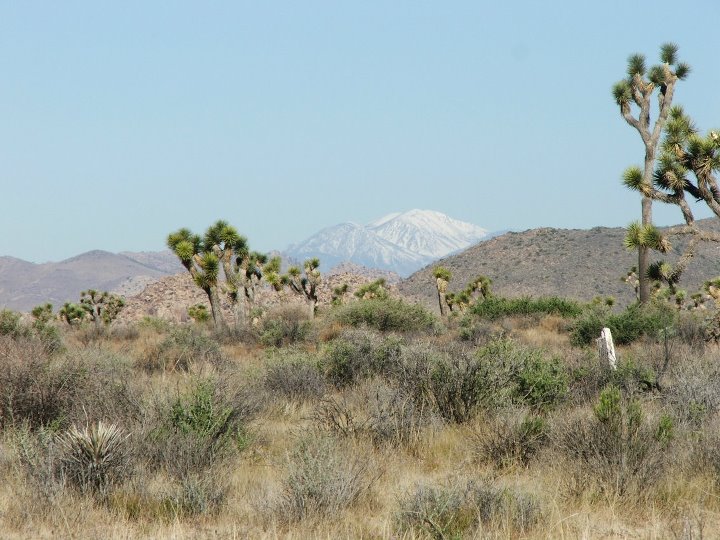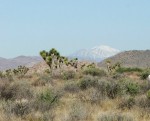 It is hard to believe that in a world where the human population now exceeds 7 billion, that there are still unexplored wild areas, and new plant and animal species being discovered. I think it is easy to understand the importance of preserving oceans, jungles, rainforests, grasslands, and deserts (yes, even deserts) for the known species that inhabit them, but what about the places that are home to creatures yet to be discovered? What about the plants, bacteria, or fungi in those wild areas that could lead to new breakthroughs in medicine? And, although hard to imagine, should we not be concerned of the unexplored environment that are home to native peoples that have never come face to face with another living human? Should we not work hard to protect their anonymity and home?
It is hard to believe that in a world where the human population now exceeds 7 billion, that there are still unexplored wild areas, and new plant and animal species being discovered. I think it is easy to understand the importance of preserving oceans, jungles, rainforests, grasslands, and deserts (yes, even deserts) for the known species that inhabit them, but what about the places that are home to creatures yet to be discovered? What about the plants, bacteria, or fungi in those wild areas that could lead to new breakthroughs in medicine? And, although hard to imagine, should we not be concerned of the unexplored environment that are home to native peoples that have never come face to face with another living human? Should we not work hard to protect their anonymity and home?
The need to explore and discover is innate in all beings. You do not have to be a scientist to appreciate the idea of witnessing events for the very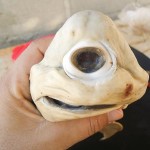 first time or identifying a new species. Around the world, in just the last 12 months, thousands of new species, from all Kingdoms of life, have been documented. The cyclops shark found in the waters of Mexico was at first thought to be the result of a genetic abnormality. Several cyclops shark embryos have been collected, but none have been found alive. In a remote rainforest in Vietnam the demon bat and vampire flying frog were also newly discovered. Unlike their names imply, these
first time or identifying a new species. Around the world, in just the last 12 months, thousands of new species, from all Kingdoms of life, have been documented. The cyclops shark found in the waters of Mexico was at first thought to be the result of a genetic abnormality. Several cyclops shark embryos have been collected, but none have been found alive. In a remote rainforest in Vietnam the demon bat and vampire flying frog were also newly discovered. Unlike their names imply, these 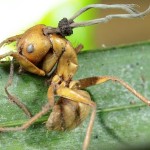 species live rather harmoniously within their environments choosing flight over fight. Zombie ants controlled by a new fungus species, Ophiocordyceps camponoti-balzani, can be observed in Brazilian forests. The fungus infects an ant, takes over its brain, kills the ant, germinates, and releases its spores. In addition, a new species of jellyfish has been documented off the Florida Keys called the pink meanie; aptly named because it feeds on other jellies. Can you just imagine what is out there waiting to be seen?
species live rather harmoniously within their environments choosing flight over fight. Zombie ants controlled by a new fungus species, Ophiocordyceps camponoti-balzani, can be observed in Brazilian forests. The fungus infects an ant, takes over its brain, kills the ant, germinates, and releases its spores. In addition, a new species of jellyfish has been documented off the Florida Keys called the pink meanie; aptly named because it feeds on other jellies. Can you just imagine what is out there waiting to be seen?
Not to be outdone, some very interesting plant species have made their inaugural debut on taxonomy lists in 2011. Deep in the rainforests of Cuba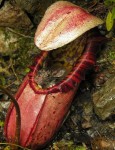 a night blooming species, Marcgravia evenia, have evolved leaves that are more acoustically-friendly to attract nectar drinking bats. Bats visiting this plant benefits from the large amount of nectar contained in the blossoms and also act as pollinators to help the plant propagate. The Nepenthes attenboroughii found on the face of Mount Victoria in the Philippines is a carnivorous pitcher plant with a twist; this species eats rats. Lured by sweet nectar, rodents leaning into this plant for a drink tumble into the wide mouth of this giant and inevitably get stuck inside. To add insult to injury, the acid-like digestive
a night blooming species, Marcgravia evenia, have evolved leaves that are more acoustically-friendly to attract nectar drinking bats. Bats visiting this plant benefits from the large amount of nectar contained in the blossoms and also act as pollinators to help the plant propagate. The Nepenthes attenboroughii found on the face of Mount Victoria in the Philippines is a carnivorous pitcher plant with a twist; this species eats rats. Lured by sweet nectar, rodents leaning into this plant for a drink tumble into the wide mouth of this giant and inevitably get stuck inside. To add insult to injury, the acid-like digestive  enzymes of N. attenboroughii begin to digest the animal while it is still alive. Not as gruesome, but equally as interesting, a new plant species in Brazil grow branches in a downward direction instead of up. Branches penetrate the surrounding the soil which facilitates the planting of its own seeds.
enzymes of N. attenboroughii begin to digest the animal while it is still alive. Not as gruesome, but equally as interesting, a new plant species in Brazil grow branches in a downward direction instead of up. Branches penetrate the surrounding the soil which facilitates the planting of its own seeds.
Although not an annual occurrence, 2011 yielded a newly discovered indigenous tribe in the Javari Valley of Brazil’s Amazon rainforest bordering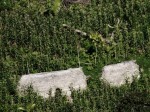 Peru. Let us just stop and think about this for a moment; this is a group of people who have never had contact with the outside world. Aerial surveillance photos show that the tribe lives in thatch roof huts and plant crops of corn, bananas, and peanuts. Illegal mining and logging operations not only threaten native peoples by destroying habitat, but also through the introduction of disease.
Peru. Let us just stop and think about this for a moment; this is a group of people who have never had contact with the outside world. Aerial surveillance photos show that the tribe lives in thatch roof huts and plant crops of corn, bananas, and peanuts. Illegal mining and logging operations not only threaten native peoples by destroying habitat, but also through the introduction of disease.
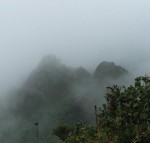 Habitat preservation is not only important for plant and animal species, but to humans as well. We tend to only be concerned when something directly affects us, but what about our moral and ethical obligations to others? The world we live in belongs to each and every one of us; unfortunately, it seems some take more than their fair share. Regardless, all living creatures and their habitat should be treasured. That said, we must all do our part to ensure that plants, animals, habitat and cultures continue to thrive and be preserved. A new generation of budding explorers and their yet-to-be-seen discoveries depends on what we do today.
Habitat preservation is not only important for plant and animal species, but to humans as well. We tend to only be concerned when something directly affects us, but what about our moral and ethical obligations to others? The world we live in belongs to each and every one of us; unfortunately, it seems some take more than their fair share. Regardless, all living creatures and their habitat should be treasured. That said, we must all do our part to ensure that plants, animals, habitat and cultures continue to thrive and be preserved. A new generation of budding explorers and their yet-to-be-seen discoveries depends on what we do today.
